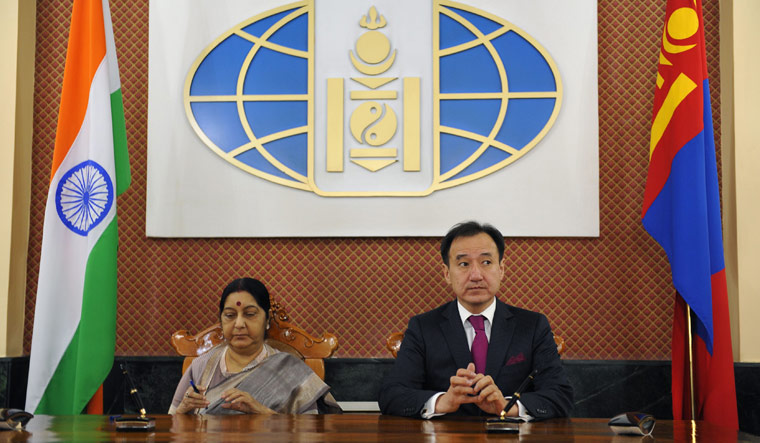Narendra Modi went to Ulaanbaatar in 2015, in the first flush of his prime ministership. He was reaching out to countries in the near neighbourhood, going where no Indian PM had ever gone before. The high-optic visit, however, was soon forgotten in the rough and tumble of domestic governance and the larger picture of geopolitics—deteriorating ties with Pakistan, a near flare-up with China that has taken the entire diplomatic machinery much effort to defuse and changes in the US and Europe.
The two-day visit of External Affairs Minister Sushma Swaraj to Mongolia is an attempt at taking forward the promises Modi made. Modi had then committed to a $1 billion line of credit to Mongolia, which is being used to fund collaborative projects, chiefly a refinery.
However, a year after Modi's trip, the Dalai Lama visited Mongolia. China saw red. It imposed fees on commodity exports from Mongolia. Mongolia, heavily dependant on China for its economy, felt the pinch. Later, the Mongolian foreign ministry stated they firmly supported the 'One China' policy and consistently held that Tibet was an inseparable part of China.
“That episode soured Mongolia's ties with India,” says Alka Acharya, professor at the School of International Studies at Jawaharlal Nehru University. “Swaraj's visit is not just a follow-up to Modi's trip but also our way of saying that we want our ties back on an even keel.''
Mongolia, which sits on a lot of natural resources and raw materials, is valuable to India. Uranium is quite abundant there, even as India is always in need of uranium suppliers.
India's ties with Mongolia are still at a nascent stage, and can be boosted in several ways, leveraging, of course, cultural and historical ties. Swaraj, at a joint press meet with Mongolia's foreign minister D. Tsogtbaatar after the sixth session of the India-Mongolia Joint Committee on Cooperation, noted that there were so many areas of cooperation, from infrastructure development and energy to IT.
There are several low-hanging fruits also, like starting air services between the two countries, which the two foreign ministers explored.


